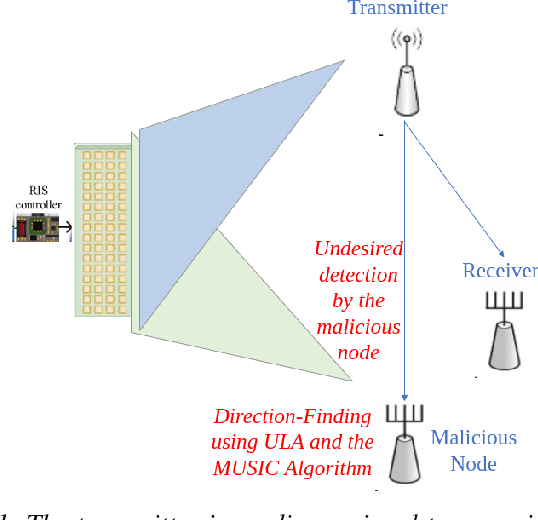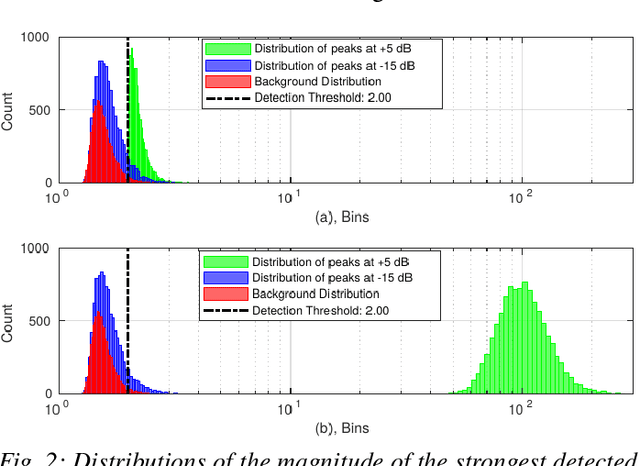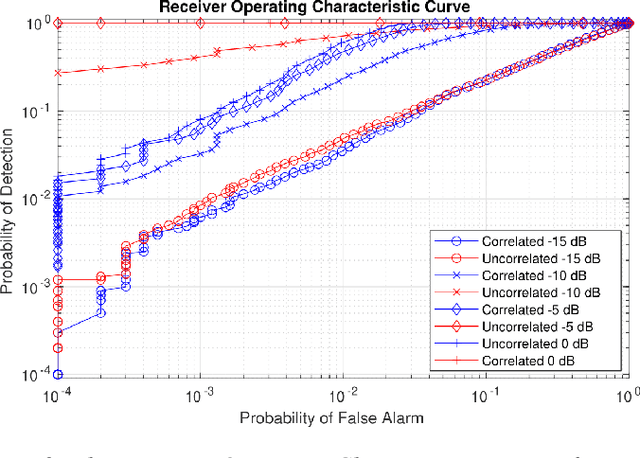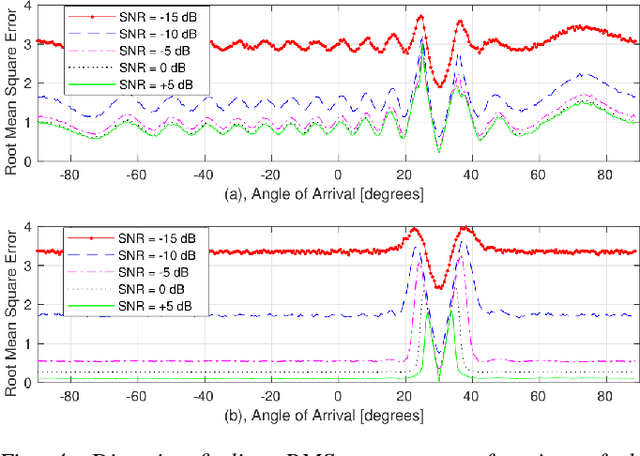Probability-Reduction of Geolocation using Reconfigurable Intelligent Surface Reflections
Paper and Code
Oct 18, 2022



With the recent introduction of electromagnetic meta-surfaces and reconfigurable intelligent surfaces, a paradigm shift is currently taking place in the world of wireless communications and related industries. These new technologies have enabled the inclusion of the wireless channel as part of the optimization process. This is of great interest as we transition from 5G mobile communications towards 6G. In this paper, we explore the possibility of using a reconfigurable intelligent surface in order to disrupt the ability of an unintended receiver to geolocate the source of transmitted signals in a 5G communication system. We investigate how the performance of the MUSIC algorithm at the unintended receiver is degraded by correlated reflected signals introduced by a reconfigurable intelligent surface in the wireless channel. We analyze the impact of the direction of arrival, delay, correlation, and strength of the reconfigurable intelligent surface signal with respect to the line-of-sight path from the transmitter to the unintended receiver. An effective method is introduced for defeating direction-finding efforts using dual sets of surface reflections. This novel method is called Geolocation-Probability Reduction using Dual Reconfigurable Intelligent Surfaces (GPRIS). We also show that the efficiency of this method is highly dependent on the geometry, that is, the placement of the reconfigurable intelligent surface relative to the unintended receiver and the transmitter.
 Add to Chrome
Add to Chrome Add to Firefox
Add to Firefox Add to Edge
Add to Edge